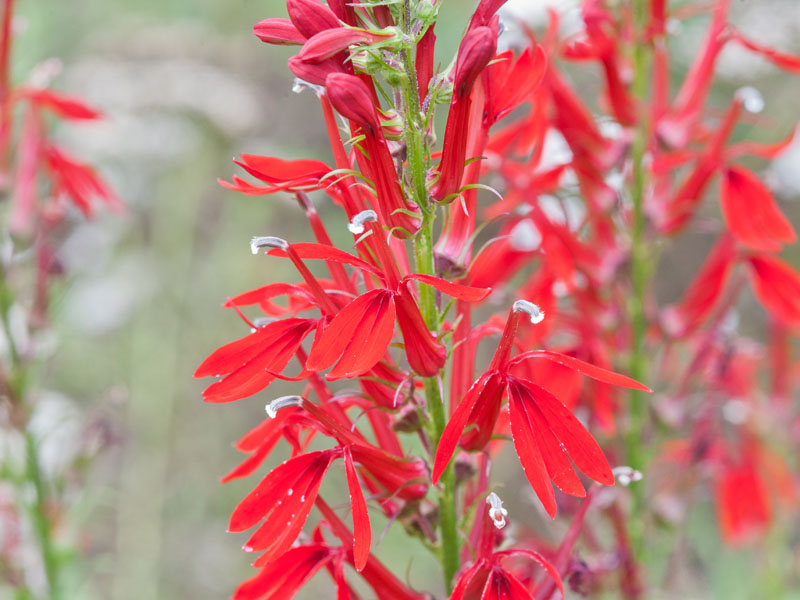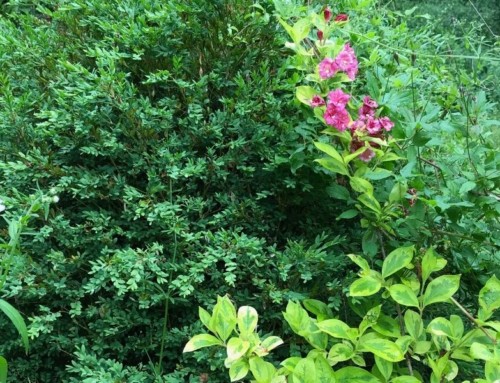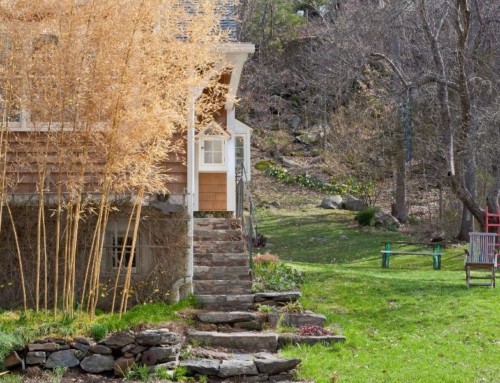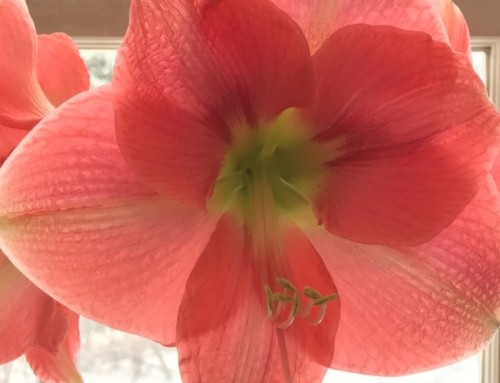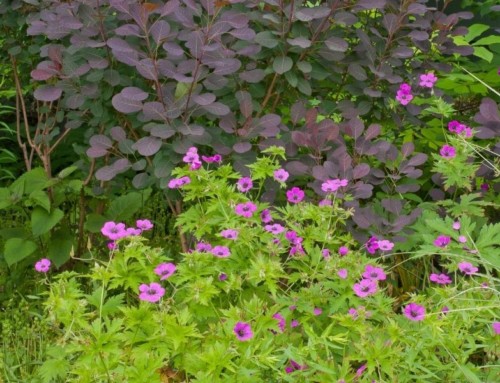Sometimes our good intentions backfire.
Plant a measly couple of coneflowers or other blooms in an impoverished landscape and bees will congregate – concentrating their parasites, predators and pathogens in a small area for all to share.
Plant gorgeous garden lupine cultivars and expect lots of long-tongued bumblebees. That’s good.
But if an endangered Karner’s Blue butterfly, a lupine specialist, is lured by lupine’s characteristic chemical signature, it may lay eggs. If those eggs hatch, the caterpillars die.
They can only digest leaves of Lupinus perennis, the eastern native species they co-evolved with. Garden cultivars (and naturalized escapees), derived from a northwestern species, are a trap.
Plant “the latest greatest” native cultivars with frilly double flowers and, if pollinators can even get through congested petals, they’re unlikely to find sustenance. Double flowers are sterile.
We know that native plants are crucial throughout insects’ life cycles, but there’s so much we don’t know.
Scientific research, like insect-plant relationships, is highly specific. But researchers are beginning to fill in the dearth of data and come up with some pretty good clues to answer THE BIG QUESTION:
ARE NATIVE CULTIVARS AND HYBRIDS AS GOOD FOR POLLINATORS (AND OTHER BENEFICIAL INSECTS) AS “TRUE” NATIVE SPECIES?
Annie S. White, owner of NECTAR Landscape Design Studio in Vermont described her PhD research at October’s UConn Native Plants and Pollinators Conference. What I learned will certainly guide future plant choices.
Noticing that bees gathered in great numbers on her species spiderwort, Tradescantia ohiensis, but few went to the ‘Red Grape’ hybrid, tipped her off that there must be a fundamental unseen difference.
She devoted her research to investigating whether cultivars (cultivated varieties) of native plants (aka “nativars”) and hybrids are ecologically equivalent substitutes for true native species, by establishing test plots and monitoring pollinator visitation. With a few exceptions, patterns emerged.
FORAGING POLLINATOR ABUNDANCE (FROM HIGHEST TO LOWEST)
- Unmodified “straight” or “true” species
- Open-pollinated, seed selections from a wild population or chance garden seedling
- Minimally modified cultivars
- Moderately modified cultivars
- Highly modified cultivars (repeated selections over many generations)
- Interspecific hybrids (crosses between species)
CONEFLOWERS (ECHINACEA)
She found that pollinators hugely prefer straight species purple coneflowers (Echinacea purpurea), for example. ‘White Swan’, an open-pollinated seed-grown selection is less attractive than the species, but much preferred to highly bred cultivars.
Echinacea ‘Pink Double Delight’ is a sterile double and ‘Sunrise’, a yellow-flowering hybrid, a cross between two species (E. purpurea and E. paradoxa). They’re big hits in the cut flower trade – but they flunk the pollinator popularity contest.
CARDINAL FLOWERS (LOBELIA)
Brilliant red cardinal flowers (Lobelia cardinalis, photo above) have tall clusters of long tubular blooms that open along the stem, over the course of many weeks – starting at the bottom.
A stalk containing reproductive structures sticks out above the deep tube full of nectar. Male reproductive parts mature before female parts, so as flowers open over time, the newest ones on top bear pollen, lower ones receive it.
There’s no big landing pad for bees and they can’t get to the big well of nectar inside. Some long-tongued butterflies can hang on and reach the sweets.
Hummingbirds and cardinal flowers were made for each other.
When a hummingbird hovers and sips, it bonks its head against perfectly positioned pollen-laden stamens. As it flits from plant to plant, working its way up each stem, the hummingbird’s pollen-dusted head hits the pistils of female phase flowers.
Pollen received, cross-pollination accomplished.
This large pollinator expects – and needs – a large, sweet reward. Cardinal flowers, in return for pollination services, however inadvertent, dish it up.
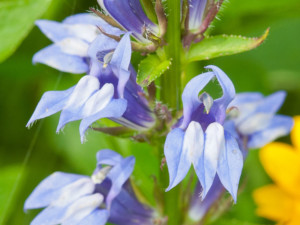
Lobelia siphilitica
Blue lobelia (Lobelia siphilitica), sometimes called blue cardinal flower, has more compact structures and less nectar because it’s pollinated by bumblebees that pick up and deliver pollen as they crawl inside.
Dr. White gave a compelling example of how hybridization and marketing of plants that feed our love of novel forms and colors can cause loss of ecological function by not feeding pollinators.
Lobelia x speciosa Fan® Scarlet is a shorter, earlier-blooming cross between blue lobelia and cardinal flower, (x indicates it’s a hybrid, ® for trademark registration). It’s also sold as Lobelia speciosa ‘Fan Scarlet’ and Lobelia cardinalis ‘Fan Scarlet’ (suggesting it’s a cultivated variety rather than a cross).
Its flowers look just like the cardinal flower species, she says, but only have 20% of the nectar volume. Nectar = energy, and hummingbirds need a lot of it.
So, the flower attracts pollinating hummingbirds by looking like a cardinal flower, but the reward is only enough to fuel a bumblebee.
That’s a trap!
Read Dr. Annie S. White’s Simple Tips for Creating a Pollinator-Friendly Landscape for really useful ways to attract, feed and protect pollinators. To dig into charts from her research, just hit the “Home” tab.
More research needs to be done to understand why strange things happen when we get too far from wild forms. It could be color, or scent, or bloom time, nectar quantity or quality, or morphology (flower structures).
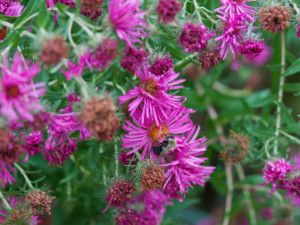
One lonely bee on Aster ‘Alma Potschke”
When she projected a video showing zillions of pollinators foraging on wild-type New England asters (Symphotrichum novae-angliae) and just a few on the highly-bred magenta flowering cultivar ‘Alma Potschke’ right next to it, I lost my long-time loyalty to good old Alma.
Seeing is believing.

